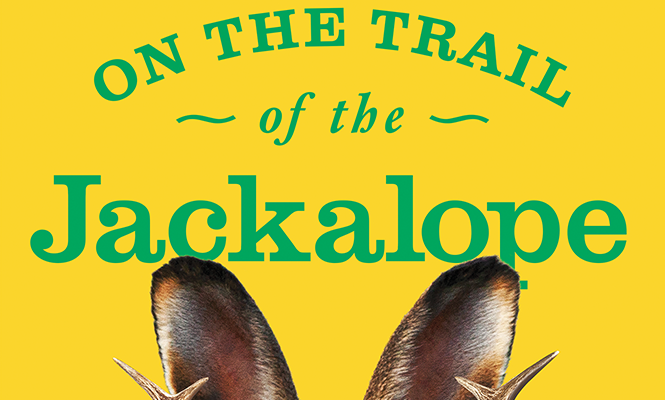
- Pegasus Books
The American jackalope can appear almost anywhere: as a taxidermied mount on a wall, on postcards, even in the name of a Salt Lake City bar. Like rabbits of all kinds, these horn-bearing rodents seem to have an almost infinite capacity to multiply—despite the fact that they don't actually exist. Or, then again, maybe they do. Sort of. In a sense.
Exploring that more-complicated-than-it-seems question is the focus of On the Trail of the Jackalope: How a Legend Captured Our Imagination and Helped Us Cure Cancer, by Michael P. Branch, a writer and professor at the University of Nevada, Reno. The strange, mostly-mythological creatures have fascinated Branch for decades, he relates by phone, but one particular incident finally pushed him towards researching jackalopes for a book.
"Over time, I just realized I was seeing jackalopes everywhere in popular culture," Branch says. "It crept up on me a little bit at a time: the name of this whiskey, the name of this club, the name of this band. Then I was in this brewpub and saw a tattoo [of a jackalope] on a woman's bicep, and I said, 'That's it.' I hit a saturation point that day that I knew I had to figure out the story behind the story."
And so he did, in a lively volume that digs into every part of the fact and fiction behind the jackalope: the Douglas, Wyo. brothers whose fanciful Depression-era creation of a mountain rabbit with horns turned their town into the unofficial "home of the jackalope;" the myths from cultures around the world about horned rabbits, and the trickster characters of indigenous mythology; the collectors of ephemera and memorabilia bearing the jackalope's likeness.
Most fascinating of all, Branch discovered a historical footnote connected to the existence of actual "horned" rabbits in nature. Scientist Richard Shope began investigating rabbits with tumorous growths in the 1930s, and ultimately conducted the research that—along with significant contributions from colleague Peyton Rous—identified certain cancers as caused by viral infection, and led to the development of vaccines for HPV.
"That was probably the greatest discovery [in his research]," Branch says. "I knew that horned rabbits, with these growths, existed, and I wanted to see what connection there was with jackalopes. Just as I wanted to say 'where did the first jackalope mount come from,' I had that corollary quest, 'who was the first person to get into these weird rabbits in nature?' And I was shocked in my archival research that Shope's first research was in 1932, the same year as the first jackalope mount. At the exact same moment, two different storylines are happening that feel weirdly connected."
That story is just one of many ways in which On the Trail of the Jackalope deals with the way that myth and reality can be far more closely connected than we're generally willing to acknowledge. "[The jackalope] seems to exist in this liminal zone between the real and the imaginary," Branch says. "It looks just credible enough that it could exist, but ridiculous enough that it probably doesn't. ... I really love that idea that we think we know what's real, but we really don't—and probably shouldn't."
While Branch acknowledges that this is a challenging historical moment to be championing the value of people believing things that aren't based in fact—especially, as he notes, since that HPV vaccine which could save thousands of lives is resisted by so many parents for their children—he also believes that we learn something from these stories about ourselves, and the kind of world we want to live in.
"I've tamed my urge to rush in and debunk," he says. "Narrative is our oldest technology as a species. [Working on the book] has opened my mind tremendously to the value of stories that may not be true. ... The habitat of the imagination is linked to the habitat of the natural world. I joke that I would like to work with one of our environmental groups to create a jackalope preserve, because you'd preserve not just the landscape of the imagination, but actual habitat of so much life."
That "landscape of the imagination" clearly includes herds of wild jackalopes for many people, and Branch has seen first-hand how people of all ages can find the fantastic beast so charming. In most of the interviews from the book, he asks his subject as a final question, "Why do you think people love jackalopes?" The answer that stuck with him most came from Douglas, Wyo. resident Helga Bull: "Because they're as real as you want them to be."
"It spoke to this idea that there's a continuum between the real and the imaginary," Branch says. "And I love the way the jackalope gives us license to exist between the real and the imaginary.
"We've invented creatures because we need them; our life requires that question. This is much more a book about imagination than about rabbits."